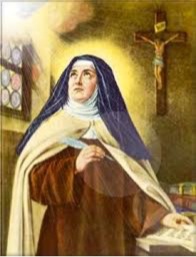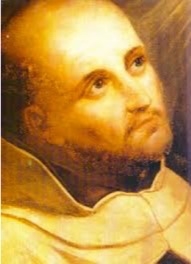The Origins of Carmel
The Birth of an Order
The origin of the Carmelite Order dates back to the middle of the 12th century, when a group of pious pilgrims settled there to lead an eremitical life in imitation of the Prophet Elijah. The main elements of his life — zeal, ardor, total dedication to God, solitude, penance, prayer, and contemplation — became the way of life for the first hermits on Mount Carmel. His provoking challenge to the vacillating people of Israel: “How long will you straddle the issue? If the Lord is God, follow Him…” resounds through the generations and inspires his contemporary sons and daughters to a like absoluteness in their commitment to God.

The Rule
The Rule of the first Carmelites, given in 1209 by St. Albert, Patriarch of Jerusalem, is permeated with the flavor of Eastern monasticism. Biblical and evangelical, it is brief and unlegalistic. It begins by stating: “[You] should live a life of allegiance to Jesus Christ…pure in heart and steadfast in conscience…Be unswerving in the service of [your] Master.” All converges towards the contemplation of God. With its insistence on continual prayer, obedience, solitude, simplicity, manual work, fasting, and silence, this Rule has been called a “Rule of Mysticism.”

Migration to the West
After spreading throughout the Holy Land, the Order’s migration to Western Europe was made imperative by the constant Saracen uprisings in Palestine. Despite the patronage of some European sponsors, including St. Louis IX, King of France, adaptation to Western culture proved very difficult. The Order was in a crisis until a prominent English Carmelite, St. Simon Stock, adapted the eremitical life to make it practical in the new society in which they found themselves. His adaptations inaugurated a “golden age” for the Carmelites. Through the successive centuries, the Order expanded and has given the Church many mystics, saints, poets, theologians, and spiritual writers.
The Discalced Carmelite Reform
”…all my longing was and still is that since He has so many enemies and so few friends that these few friends be good ones.” (The Way of Perfection, ch. 1)
A new epoch began for the Order when the vivacious and attractive Teresa de Ahumada y Cepeda entered the Carmelite Monastery of the Incarnation in Avila, Spain, on November 2, 1535 “not so much for the love of God but as a means to save my soul.” This practical motivation was soon transformed through the experience of divine Love and the many mystical graces God was granting her. Her heart was filled with an insatiable thirst for God and a burning zeal which propelled her forward in rapid ascent towards the heights of transforming union.
St. Teresa was keenly aware of the needs of the church in the wake of the divisions and conflicts resulting from the Protestant Reformation. Moreover, she had come to realize the apostolic value of prayer and penance as a means of healing the disunity of Christians. With penetrating discernment she saw that the surest way to secure this efficacious, salvific prayer was to return to the Primitive Rule embodying Carmel’s first ideals.
Despite almost insurmountable difficulties and often bitter opposition, she succeeded in 1562 in establishing a small monastery dedicated to Saint Joseph within the heart of the city of Avila, delicately combining eremitical life with community life, with prescriptions for a life of continual prayer, safeguarded by strict enclosure and sustained by the asceticism of solitude, manual labor, abstinence, poverty, and fasting, in an atmosphere of openness and warm, fraternal charity.
St Teresa cherished the deep conviction that the life she restored would obtain from God an outpouring of redemptive blessings on the whole world. She saw this as the height and crown of the vocation to Carmel.
It was St. Teresa’s intention to found just one reformed monastery, but, at the insistence of the General of the Order, she enlarged her plan to include additional houses. They added up to seventeen before her death in 1582, and shortly after her death, the Reform began to spread throughout continental Europe, and now encompasses the globe. St. Teresa also extended the Discalced Reform to the Carmelite Friars, beginning with the young St. John of the Cross. Together they were to communicate to the fullness of our charism and spirituality.
Besides her talents as Reformer, St. Teresa was prolific with her pen and has left an invaluable legacy of books on prayer and spirituality written in her own inimitable style. She bears the distinction of being the first woman to be declared a Doctor of the Church, by Pope (now Saint) Paul VI in 1970. Her statue, placed among those of prominent saints and founders in the Vatican, is captioned “Mother of Spirituality,” and countless are the “children” whom she has inspired to seek strength, peace, and fruitfulness in the way of prayer she teaches: “To be on intimate terms with Him whom we know loves us.”



